Last night, the Richmond City Council reached way back into Richmond history to select a new name, Stenmark Drive, for the portion of Western Drive that extends north of I-580 and the Richmond-San Rafael Bridge along the shoreline.
Originally known as County Road 27, Western Drive was renamed at the turn of the 20th Century by real estate speculators selling waterfront lots and looking for a more evocative address. Later, Chevron cut Western Drive in two where it once passed unbroken under what is now the Richmond-San Rafael Bride. Now in two halves, Western Drive has caused great confusion. People unfamiliar with the territory looking for the remnant of Western Drive that runs along the Point Richmond waterfront have found themselves lost on the lonely road that runs through Point Molate out to Point San Pablo and the Point San Pablo Yacht Harbor. Conversely, 18-wheelers looking for some destination on the northern segment of Western Drive have found themselves lost and jackknifed on a tight corner in Point Richmond.
Clearly, the two segments of Western Drive needed to be differentiated. The City Council’s action preserved the Point Richmond portion of the street as Western Drive while renaming the northern segment Stenmark Drive.
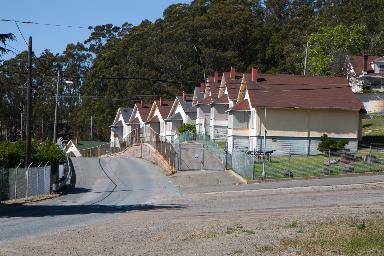
Above, Stenmark Drive (formerly Western Drive) wends through the former Point Molate Naval Fuel Depot
Who was Stenmark, and why name a Richmond street after him?
Captain J.O. Stenmark of the U.S. Lighthouse Service was keeper of East Brother Light Station from 1894 to 1914, longer than any other keeper in the 140-year history of the lighthouse, which is the oldest structure in the City of Richmond. He predated most of the early Richmond pioneers with streets named after them, such as Augustin Macdonald. Who “discovered” Richmond in 1895. Stenmark’s appointment as keeper of East Brother Light Station spanned the time from the final partition of Point San Pablo in 1894 through the incorporation of the City of Richmond in 1905 until Richmond was an established industrial city. During this time, the population of what is now Richmond grew from less than 100 to more than 20,000.
Stenmark was born in 1865 and emigrated to the United States at age twenty. In 1888 he joined the U.S. Lighthouse Service. His first job was working as a crewman aboard the lighthouse tender Madroño. At that time equipment and supplies for most lighthouses were delivered by ship. The 180-foot-long Madroño had a crew of nineteen and steamed about 10,000 miles each year servicing lighthouses and buoys throughout California. The lighthouse inspector was usually on board to deliver the keepers' pay and to inspect the station. It was while Stenmark was helping unload supplies for the Point Conception lighthouse that he saved the life of Inspector Thomas Perry.
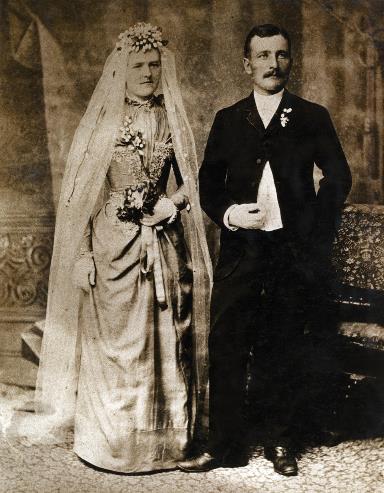
Above, John and Greta Stenmark
Point Conception stands out as the most pronounced point along the California coast. Consequently, seas there can be particularly rough. Captain Stenmark and some of his fellow crew members were trying to get a small boatload of supplies to shore from the tender. Suddenly, a rough wave capsized the boat, dumping the men and supplies into the water. Perry was carried helplessly away by the heavy seas and was soon in serious trouble. The other crew members clung fearfully to the capsized boat as young Stenmark, bleeding from a cut on his head caused by a breaking oar, swam towards the inspector. Just as the inspector was about to go under, Stenmark reached him and struggled unsuccessfully to swim to shore, holding the officer's head above water. Both men nearly drowned before finally being rescued by the tender.
Captain Stenmark was highly commended for his bravery. As a reward, on August 1, 1890, he was appointed assistant keeper at Año Nuevo Island fog signal station. Located forty-five miles south of San Francisco, the island supported a twelve-inch steam fog whistle and a small lens-lantern for a light. Although an improvement over life on the lighthouse tender, conditions on the tiny island were far from ideal. Stenmark and his wife, Breta, shared with the principal keeper a tiny cottage that had been partitioned into two living areas. The island residents could only get to and from the island by rowboat. Navigating through the surf, while trying to avoid the rocks around Año Nuevo Point, always made crossing the half-mile channel dangerous. In 1883 four men, including the keeper and assistant, drowned while trying to make the crossing.
Stenmark must have been an able assistant, for in 1892, when keeper Henry Hall was transferred, Stenmark was appointed keeper at Año Nuevo. He continued helping others, several times rescuing fishermen whose boats capsized near the island. In 1894 the Stenmarks' first daughter, Annie, was born at Año Nuevo. Three months later John Stenmark was transferred to East Brother and the young family set up housekeeping on San Francisco Bay. The island was smaller, but the house was bigger, and bay waters usually calmer. The Stenmarks quickly grew to like their new home and stayed almost twenty years.
Captain Stenmark and Breta made the most of the small piece of land. They bought soil from the mainland and grew vegetables in a tiny garden in front of the lighthouse. In pens they raised goats, pigs, rabbits, and chickens. During his first few years as keeper, Stenmark, like his predecessors, rowed the two miles to Point San Quentin to do shopping and get mail. Prior to the birth of each of his two sons he rowed all the way to San Quentin and back to fetch the doctor.
The Stenmarks had four children: Annie, Ruby, Phillip, and Folke. For several years when the children were young the government paid for a teacher to live at East Brother part of each year and tutor the children. Later, when a road was built from Point San Pablo to the town of Point Richmond, the children attended school there. By that time, mail and provisions were picked up at Point Richmond instead of Point San Quentin.
Daughter Annie lived for the first twenty years of her life on the island until she met and married Charles Morisette. Morisette worked a short distance from the lighthouse at the Standard Oil refinery. "My hubby, Charlie, used to come courting to the island," she recalled fondly in later years. "He couldn't row very good at first, but we soon taught him." When the couple got married in June, 1914, the newspaper announced "Cupid Ends Lighthouse Romance:"
A romance that had its beginning beneath the tall, gray tower of the Brothers Lighthouse, located [off] Point Orient, culminated in a happy marriage at Oakland yesterday when Charles Morisette, a foreman at the Standard Oil wharf, claimed Miss Annie E. Stenmark as his bride.
Miss Stenmark is the daughter of John O. Stenmark, lighthouse keeper [off] that point, and it was while assisting her father about his duties of caring for the great white light that flashes across the treacherous waters of the upper San Pablo bay that she became acquainted with Morisette.
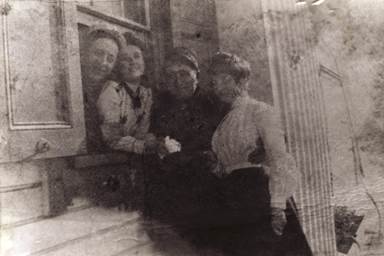
Above, The Stenmark girls
Despite living on an island, the Stenmarks had many friends in the surrounding bay area. They sometimes entertained as many as fifty friends and relatives at the lighthouse. On the occasion of their nineteenth wedding anniversary, the local newspaper described the gathering:
The guests were carried across to the light house from Bailey's wharf in row boats, and as the bay was calm everyone enjoyed the trip immensely.
The rooms were very prettily decorated for the occasion and the evening was spent with music and dancing. Dainty refreshments were served at the proper time, after which hearty congratulations and best wishes were extended to the host and hostess.
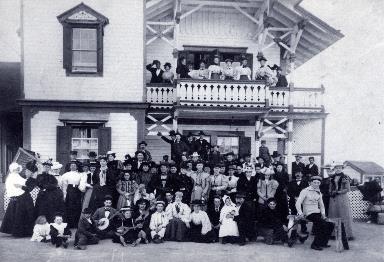
Above, Stenmarks entertaining at East Brother, 1910
Stenmark retired as keeper of East Brother in July, 1914. The family moved to Richmond, where they owned and operated the Stenmark Hotel on Fifteenth Street. Stenmark died only a year later in 1915 while on board the steamer, City of Topeka, traveling up the coast from San Francisco.
East Brother Light Station benefited from numerous improvements during the two decades the Stenmarks served as keepers. The lighthouse and fog signal gained renewed importance following construction of the Standard Oil refinery in Richmond in 1901. Docks for tankers were built along the San Pablo shoreline only a few hundred yards from the station. In 1909 the California Wine Association also established Winehaven, its huge aging and bottling plant just south of Point San Pablo. The plant had a storage capacity of 12 million gallons and a 1,800-foot wharf where grapes were unloaded and barrels of wine shipped out. With these and other developments, the town of Richmond ballooned in population from 200 in 1901 to 23,000 by 1917.
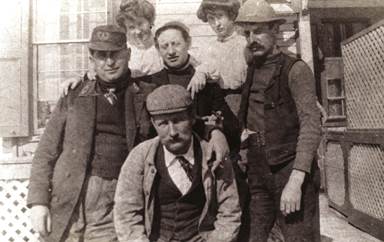
Above, the Stenmarks and friends
Because of Captain J.O. Stenmark’s illustrious life and recognition of the colorful contribution to the early history of Richmond by him and his family, Western Drive north of I-580 was renamed “Stenmark Drive.” A detailed account of the Stenmark years at East Brother may be found at http://www.ebls.org/stenmark.html.

Above, Breta Stenmark and the fog bell
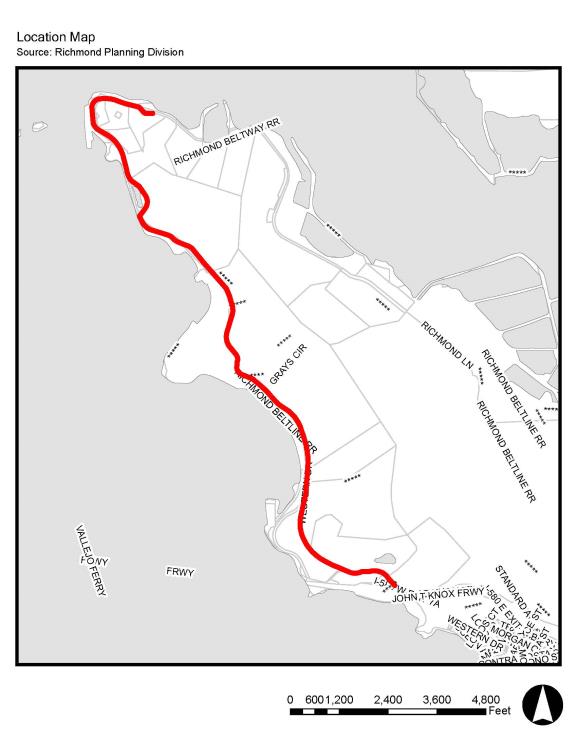
As you drive out to the end of Point San Pablo on the newly-named Stenmark Drive, you might want to hum along with “Lighthouse Man” by The Waifs at http://www.youtube.com/watch?v=kl4ABCEPAW0 and conjure up images of long ago:
Lighthouse tall and grand
Standing on that cold headland
Shine your light across the sea
For a wayward sailor girl like me
Lighthouse man
Guide this sailor back to land
Steer my ship on through the storm
Back to water safe and calm
Sometimes I need a lighthouse for my own
Because it gets so dark I can’t see which way I’m going
Oh lighthouse man I’m all at sea
Shine a little lighthouse light on me
Lighthouse man I’m all at sea
Shine a little lighthouse light on me
Lighthouse man can’t help us all
Some he’ll save and some will fall
He’ll show you where the danger lies
But he can’t help it if you capsize
He’ll light your way but that is all
Steer your own ship back to shore
Won’t you light my lonely way back home
This sea is full of misery and woe
Oh woe betide those that say
They don’t need no light to light their way
They think they’re safe enough on their own
Drown in murky depths below
We all need a lighthouse for our own
Because it gets so dark I can’t see which way I’m going
Oh lighthouse man I’m all at sea
Shine a little lighthouse light on me
oh light house man im all at sea
shine your little lighthouse light on me

Above, Point San Pablo Yacht Harbor
The Point San Pablo Peninsula has four geographic locations that are knitted together by Stenmark Drive:
- Castro Point (Castro Point, probably named for Francisco Maria Castro, original grantee of Rancho San Pablo).
- Point Molate (The name moleta was applied in Mexican times to the island now known as Red Rock, probably because its shape resembles the conical stone, called moleta, used by painters to grind colors. Beechey in 1826 misspelled the word molate, and this version was adopted in 1851 by the Coast Survey. Molate Point was named by the Coast Survey in 1854).
- Point Orient (Port Orient wharf handled so much kerosene for China that sailors all over the Pacific knew of it and gave it its name).
- Point San Pablo (The names San Pedro and San Pablo (Peter and Paul) for points on opposite shores of San Pablo Strait orginated probably at the same time. They are mentioned in Abella’s Diary in October 1811, and the Punta de San Pablo is recorded by Duran on May 13, 1817).
All, except Point Orient have Spanish origins.
The area around Point Molate became the location where Winehaven was constructed in 1908. It was only when the Navy established its Naval Fuel Depot, Point Molate, that that what had been known as Winehaven became referred to as Point Molate.
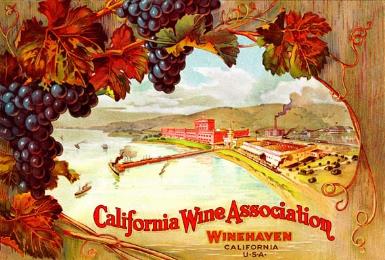
Since introducing the resolution to rename Western Drive in honor of Captain J.O. Stenmark, I been hearing from members of the Stenmark Family from all over. Travis McAfee, a descendant of captain Stenmark, now living in Arkansas, sent me a link to a Swedish television show where he visited the home of his Swedish ancestors, the Stenmarks and the birthplace of Capt. Stenmark. The show is called Allt för Sverige which means Everything for Sweden. It was an amazing adventure! If you are interested in seeing the episode that describes the emigration of Capt. Stenmark and his wife Breta, please take a look on Youtube through this link; episode 2 at about 28 minutes in: Episode 2 http://www.youtube.com/watch?v=iEwqD0hXIag
 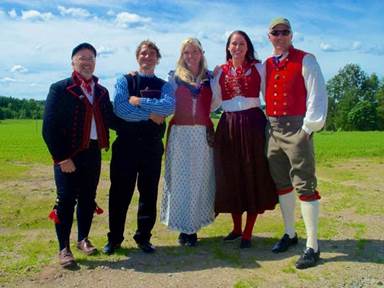
Travis is going to organize a Swedish-American family reunion at East Brother, hopefully in the summer of 2015 and will invite newly found Stenmark relatives in Sweden as well as their Swedish American cousins to attend.
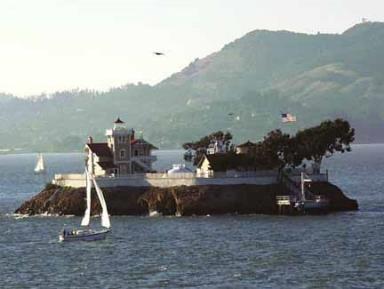
|

